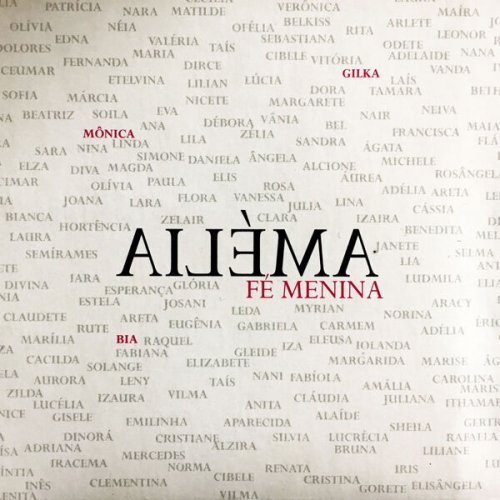Daniel Sañez - More of What I Do on Sundays: Vol. 2, The Liturgical Year (2025)

Artist: Daniel Sañez
Title: More of What I Do on Sundays: Vol. 2, The Liturgical Year
Year Of Release: 2025
Label: Raven
Genre: Classical
Quality: FLAC (tracks)
Total Time: 1:19:32
Total Size: 327 MB
WebSite: Album Preview
Tracklist:Title: More of What I Do on Sundays: Vol. 2, The Liturgical Year
Year Of Release: 2025
Label: Raven
Genre: Classical
Quality: FLAC (tracks)
Total Time: 1:19:32
Total Size: 327 MB
WebSite: Album Preview
1. Entrada (03:06)
2. Advent (03:09)
3. He Is Born (04:07)
4. Kings' Homage (05:56)
5. Ordinary (10:55)
6. Conversion (03:59)
7. Charity and Love Prevail (04:23)
8. Laetare (03:38)
9. Breath (10:27)
10. Be at Rest (04:58)
11. Revelation (24:49)
If you enjoyed What I Do on Sundays, I hope you find this second volume as engaging. These improvisations blend ancient melodies with a personal, modern voice – music meant to inspire the listener and to accompany reflections throughout the Church year. Apart from the Entrada, each piece draws from chant, with the appropriate Marian Antiphon beginning each season, as traditional as the candles of an Advent wreath.
Begin the journey with the Entrada (Track 1), a processional into the cathedral. Alma Redemptoris Mater (Track 2) opens into Advent and Christmas, evoking the mystery of time before creation. He Is Born (3), built on Puer natus est nobis, radiates the joy of the Nativity, while Kings’ Homage (4) honors the Epiphany, weaving together Eastern and Western traditions to depict the Magi’s reverence.
The brief period of Ordinary Time in winter follows the Salve Regina (5), using the solemn minor-mode chant to reflect the lingering resonance of Christmas. Lent arrives with Conversion (6), a free meditation on Ave Regina Cælorum. For Holy Week, I chose to focus on Holy Thursday, when the Church sings Ubi Caritas, “Where There Is Love,” as it commemorates the institution of the holy priesthood and recalls Christ’s command to join in service and to live in communion (7).
Easter bursts forth in Regina Cæli (8), a jubilant toccata, followed by Breath (9), an improvisation on Veni, sancte Spiritus, symbolizing the Holy Spirit moving freely through creation. Echoing the journey from sorrow to the hope of eternal life that the Church traverses in November, Be at Rest (10) pairs Requiem æternam with Dies iræ.
The finale, Revelation (11), paints scenes of the Apocalypse: trumpet calls, visions of heaven, cosmic battles, and the promise of renewal, closing with a Gregorian Alleluia. Like the dismissal at Mass, this conclusion, in the tradition of the French sortie, inspires us onward: “Go forth, glorifying the Lord by your life.”
—Daniel Sáñez
Begin the journey with the Entrada (Track 1), a processional into the cathedral. Alma Redemptoris Mater (Track 2) opens into Advent and Christmas, evoking the mystery of time before creation. He Is Born (3), built on Puer natus est nobis, radiates the joy of the Nativity, while Kings’ Homage (4) honors the Epiphany, weaving together Eastern and Western traditions to depict the Magi’s reverence.
The brief period of Ordinary Time in winter follows the Salve Regina (5), using the solemn minor-mode chant to reflect the lingering resonance of Christmas. Lent arrives with Conversion (6), a free meditation on Ave Regina Cælorum. For Holy Week, I chose to focus on Holy Thursday, when the Church sings Ubi Caritas, “Where There Is Love,” as it commemorates the institution of the holy priesthood and recalls Christ’s command to join in service and to live in communion (7).
Easter bursts forth in Regina Cæli (8), a jubilant toccata, followed by Breath (9), an improvisation on Veni, sancte Spiritus, symbolizing the Holy Spirit moving freely through creation. Echoing the journey from sorrow to the hope of eternal life that the Church traverses in November, Be at Rest (10) pairs Requiem æternam with Dies iræ.
The finale, Revelation (11), paints scenes of the Apocalypse: trumpet calls, visions of heaven, cosmic battles, and the promise of renewal, closing with a Gregorian Alleluia. Like the dismissal at Mass, this conclusion, in the tradition of the French sortie, inspires us onward: “Go forth, glorifying the Lord by your life.”
—Daniel Sáñez

![Nectar Woode - Live at Village Underground (Live At Village Underground) (2025) [Hi-Res] Nectar Woode - Live at Village Underground (Live At Village Underground) (2025) [Hi-Res]](https://img.israbox.com/img/2025-12/15/eiazyx7yigt2lhbv1tcd3eos6.jpg)
![Coco Chatru Quartet - Lost Christmas (2025) [Hi-Res] Coco Chatru Quartet - Lost Christmas (2025) [Hi-Res]](https://www.dibpic.com/uploads/posts/2025-12/1765719561_coco-chatru-quartet-lost-christmas-2025.jpg)
![Dave Holland - Emerald Tears (1977/2025) [Hi-Res] Dave Holland - Emerald Tears (1977/2025) [Hi-Res]](https://www.dibpic.com/uploads/posts/2025-12/1765891427_cover.jpg)
![Rachel Kitchlew, SFJ - Flirty Ghost (2025) [Hi-Res] Rachel Kitchlew, SFJ - Flirty Ghost (2025) [Hi-Res]](https://www.dibpic.com/uploads/posts/2025-12/1765896408_qvf41hr1ljj8a_600.jpg)
![Betty Carter - The Music Never Stops (2019) [Hi-Res] Betty Carter - The Music Never Stops (2019) [Hi-Res]](https://www.dibpic.com/uploads/posts/2025-12/1765896843_bcmn500.jpg)


